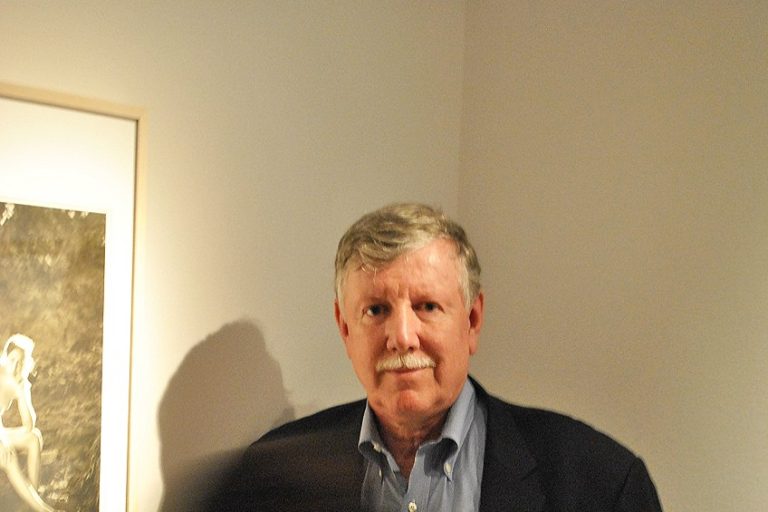Famous Nature Photographers – Best Natural Photography Artists
The best nature photographs capture the innate beauty of the natural world around us. The most famous nature photographs were not created by amateurs though, it takes a particularly artistic eye and skill set to accomplish such a feat. They were produced by the famous nature photographers we will explore in this article. Let us introduce you to the world’s best natural photography creators.
Table of Contents
- 1 Famous Nature Photographers
- 1.1 Carleton E. Watkins (1829 – 1916)
- 1.2 William Henry Jackson (1843 – 1942)
- 1.3 Eliot Porter (1901 – 1990)
- 1.4 Ansel Adams (1902 – 1984)
- 1.5 Philip Hyde (1921 – 2006)
- 1.6 David Muench (1936 – Present)
- 1.7 Galen Rowell (1940 – 2002)
- 1.8 John Shaw (1944 – Present)
- 1.9 Robert Glenn Ketchum (1947 – Present)
- 1.10 Krista Schlyer (1971 – Present)
- 1.11 Orsolya Haarberg (1977 – Present)
- 2 Frequently Asked Questions
Famous Nature Photographers
Despite all depicting the same outer world, the creators of the best nature photographs all managed to portray it in a unique way. Famous nature photographs reveal as much about their creator as they do about the landscape themselves – the way we view the world is more a reflection of ourselves than the world.
Perhaps gaining some insight into their lives will enable us to understand what it takes to create the best natural photography throughout history.
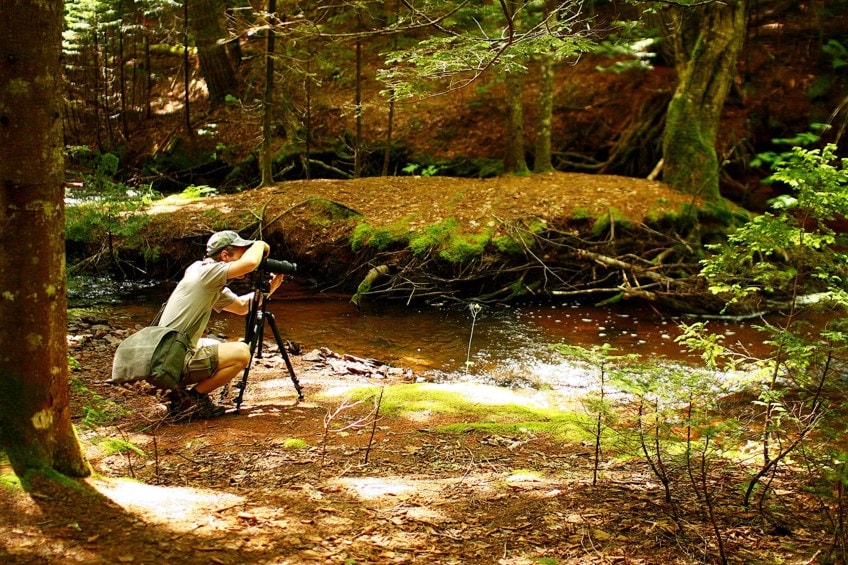
Carleton E. Watkins (1829 – 1916)
| Nationality | American |
| Date of Birth | 11 November 1829 |
| Date of Death | 1916 |
| Place of Birth | Oneonta, New York |
Carleton E. Watkins shot Yosemite often and had a significant effect on legislators discussing its preservation as a national park. His images did more than merely depict the national park; they became an emblem in their own right. Half Dome, for example, previously existed, but Watkins’ images made it available to people in a way that allowed them to experience it. Through his images, it became famous – something people desired to experience in person.
His photographs had a greater influence on Yosemite as a national park than simply urging people to come. Senator John Conness is alleged to have shared Watkins’ images throughout Congress.
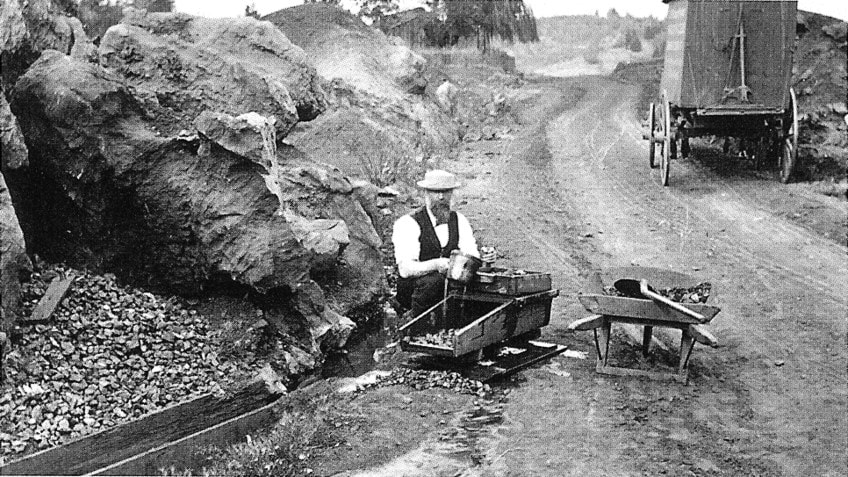
His photography was also reported to have inspired President Abraham Lincoln, who signed the Yosemite Grant in 1864, which proclaimed Yosemite Valley untouchable. The measure set the way for the establishment of Yellowstone National Park in 1872, as well as the whole United States National Park System. Mount Watkins is one of Yosemite’s numerous mountains, named for Watkins’ role in saving Yosemite Valley. Lincoln’s signature on the 1864 measure is often seen as the start of ecology in American politics.
Watkins is regarded as a major figure in the preservation of Yosemite and the establishment of the National Parks system.
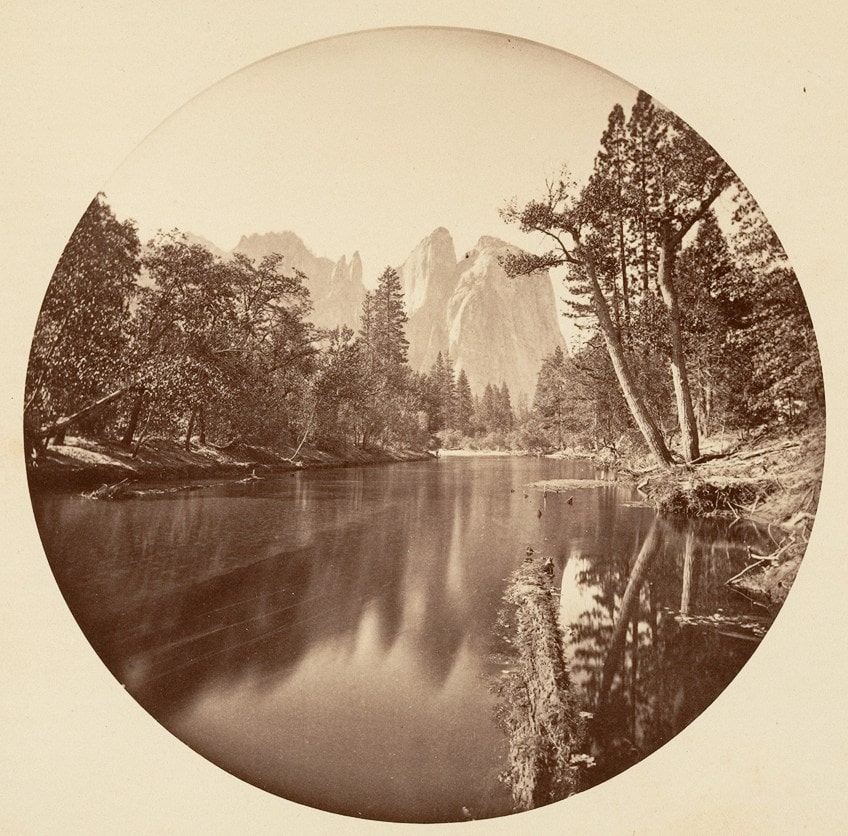
William Henry Jackson (1843 – 1942)
| Nationality | American |
| Date of Birth | 4 April 1843 |
| Date of Death | 30 June 1942 |
| Place of Birth | Keeseville, United States |
William Henry Jackson is well renowned for being the first person to picture Yellowstone’s natural beauties. His photos decorated the living rooms of millions of Americans and contributed to the establishment of the world’s first national park. Jackson was also a talented artist who documented his adventures as a teenage boy. His sketches and paintings give unique insights into life in America during the Civil War and as it ventured westward in pursuit of national identity.
Jackson was exposed to photography as a youngster in Rutland, Vermont.

He worked as an apprentice at a photographer’s studio, assisting in the staging of photographs. He learned how to utilize cameras and darkroom procedures at this time. Jackson might have continued to study his craft and establish himself in a steady and prosperous career, but circumstances beyond his power would soon pull him on a different route. William Henry Jackson, 19, enrolled in the Light Guard from Vermont.
Excluding occasional security duties, the ambitious artist had little to do.

Jackson spent the long hours painting his companions and camp scenery to send home to convince his family that he was okay. Jackson finished hundreds of paintings, most of which dealt with historical topics such as the California Gold Rush, the Fur Trade, and the Oregon Trail. Jackson returned to several of the locations he featured in his paintings in order to paint them as authentically as possible.
He searched out and questioned surviving participants for situations that occurred before his own lifetime.

Eliot Porter (1901 – 1990)
| Nationality | American |
| Date of Birth | 6 December 1901 |
| Date of Death | 2 November 1990 |
| Place of Birth | Winnetka, United States |
Eliot Porter went hiking with his father, who took images of the Canadian Rockies. Porter began photographing birds on these travels. “I quickly learned that the most gratifying medium for expressing my joy about birds was the camera,” he stated in the preface to his 1972 book Birds of North America. Eliot Porter bought a 35 mm Leica camera in 1930.
Ansel Adams’ landscape photos inspired him greatly. Porter was persuaded by Adams to utilize a large-format camera, although he bought a larger camera after encountering Alfred Stieglitz.

In 1939, Alfred Stieglitz showed his prints at the An American Place gallery. As a result, Porter left the pursuit of medicine, opting instead to become a photographer. In 1941, Porter was awarded a Guggenheim grant. With its support, he began to experiment with color photography by utilizing Kodak’s new color film, which was first available in 35mm rolls and then in sheets for large format cameras.
This work would solidify his reputation as a wildlife photographer. Porter was an expert in color.
He learned how to separate color images so that he could print them using the difficult-to-master dye transfer printing method. Color separations were created by exposing separate black and white strips of the film via color filters. The created sheets were utilized to create very fine screens for applying colored ink. The method was tedious, but the outcomes were spectacular.
Ansel Adams (1902 – 1984)
| Nationality | American |
| Date of Birth | 20 February 1902 |
| Date of Death | 22 April 1984 |
| Place of Birth | Western Addition, United States |
Ansel Adams’ technical brilliance was legendary. He relished in the philosophy and practice of the craft more than any other creative photographer before or after. Weston and Strand relied on him for technical guidance on a regular basis. He was the primary photographic adviser for Hasselblad and Polaroid, as well as many other photography companies.
Adams created the well-known and very complicated “zone system” for managing and linking exposure and development, allowing photographers to artistically conceive a picture and then make a shot that matched and communicated that visualization.
He wrote 10 volumes of technical photography instructions, which are among the most significant publications ever published on the topic. Ansel Adams’ enthusiasm and labor capacity were just enormous. He frequently worked 18 or more hours a day for days or even weeks on end. In Ansel Adams’ life, there were no holidays, holidays, or Sundays.

After a hard period of labor, he would frequently return to Yosemite or San Francisco, get the “flu,” and remain in bed for several days at a time. His hyperkinetic lifestyle was also driven by the drink, which he loved, and a perpetual whirlwind of social activities, friends, and coworkers.
Adams identified as a photographer, educator, and writer. Perhaps it would be truer to say that he was essentially (and obsessively) a communicator.
He toured the country in search of both the natural beauty he admired and shot, as well as the crowds he required. Adams was deeply committed to promoting photography as great art and was instrumental in the development of the first museum photography section, at the Museum of Modern Art in New York.
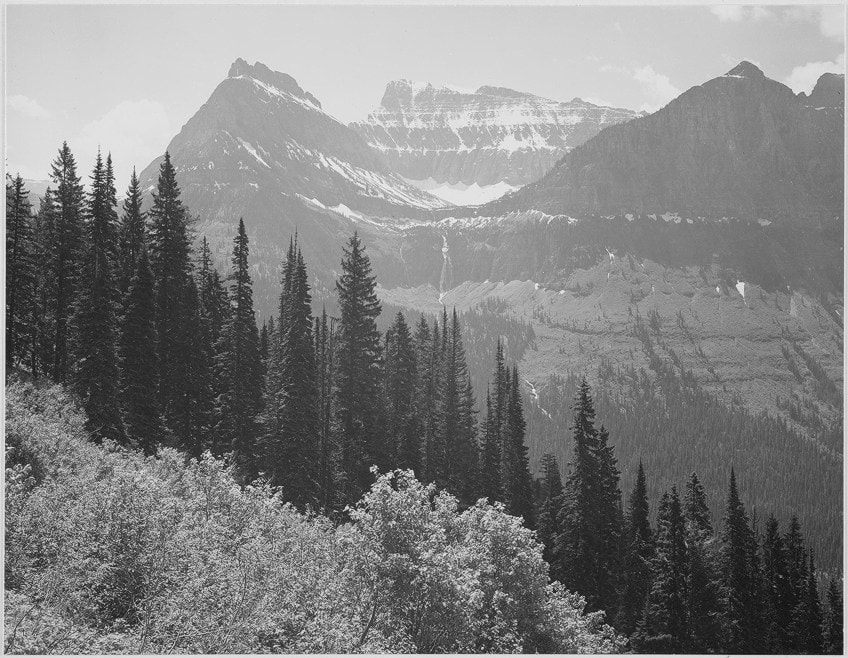
From the series Ansel Adams Photographs of National Parks and Monuments, compiled 1941 – 1942, documenting the period ca. 1933 – 1942; Ansel Adams, Public domain, via Wikimedia Commons
Philip Hyde (1921 – 2006)
| Nationality | American |
| Date of Birth | 1921 |
| Date of Death | 30 March 2006 |
| Place of Birth | San Francisco, United States |
Philip Hyde was a pioneering nature photographer and environmentalist. His images of the American West have been utilized in more ecological initiatives than any other photographer. In 1950, Hyde began submitting photographs to the Sierra Club Annual.
Hyde ultimately became the Sierra Club’s chief conservation photographer.
David Brower asked him to shoot for what became known as “war books,” which aided the Sierra Club in leading an alliance of environmental groups in the establishment or expansion of multiple national parks, wildernesses, and public seashores. The Sierra Club dubbed this book series The Exhibit Format Series.
The series’ best-known photographers were Eliot Porter, Ansel Adams, and Philip Hyde. The Exhibit Format Series helped to bring national exposure to the Sierra Club and the preservation cause, as well as popularizing the coffee table photo book, paving the way for hundreds more volumes of this sort subsequently.
Hyde stated, “There will always be those who want to misuse a location, and there will always be people who will save it and maintain it as it is. Even if it means bringing the masses into paradise, it’s best to promote your photos and rally the troops.”
He continued: “To be sure, what’s in the frame of the shot counts artistically, but what’s beyond the frame might ruin it.”
David Muench (1936 – Present)
| Nationality | American |
| Date of Birth | 25 June 1936 |
| Date of Death | N/A |
| Place of Birth | Santa Barbara, California |
David Muench is an American landscape and wildlife photographer best known for his depictions of the American West. He is the principal photographer for over 60 books, and his work can be seen in several periodicals and private collections. Nature provided the majority of David Muench’s motivation.
The beauty of the world and the outdoors inspired him. His father, who was also a photographer, provided some inspiration for him.
At the age of 18, his first Arizona Highways cover was published in January 1955, and he has kept working with the magazine ever since. To commemorate seven decades of partnership, Arizona Highways devoted a whole issue of the publication to Muench in December 2015, the first time they have done so. Ansel Adams recommended that more than 200 photos by Muench be preserved in the Center for Creative Photography’s collection.
Despite a few exhibitions, Muench selected the coffee table book as his primary outlet for his photographs.
Muench’s famous work is largely comprised of untamed landscapes shot using a 4/5 film camera. His distinctive compositional style is the near-far wide-angle view, in which a carefully chosen foreground blends into the backdrop. He also devoted special attention to “ageless events,” such as sunsets, sunrise, and the verge of storms.
Galen Rowell (1940 – 2002)
| Nationality | American |
| Date of Birth | 23 August 1940 |
| Date of Death | 11 August 2002 |
| Place of Birth | Oakland, United States |
His love of mountains began at the age of ten, when his speech professor father mother took him from their Berkeley, California, home to trek and camp in the High Sierra. At the age of 16, he began creating roped climbs and photographing his rock escapades to show his companions the sport he was so excited about. He quit his job at a small auto service shop in 1972 to pursue a profession as an adventure photographer, and a year afterward, he got his break: an arrangement to capture Yosemite for National Geographic, the first of many for that publication.
He wanted to create “a depiction of the world as a dynamic, breathing organism that would never look the same again.”
His photographs also demonstrate his ambition. Rowell was inspired by the Dalai Lama to become more politically involved than he had been in his formative years. Beginning in the early 1980s, he photographed for a book called My Tibet, a compilation of writings by the Buddhist religious leader, and he later published and spoke about the Chinese environmental violations in Tibet. Rowell was particularly interested in observing and capturing optical occurrences in nature.
Because of the fast-changing properties of light and circumstances, as well as his ardent search for the ideal camera position at the opportune moment, he characterized his landscape images as “dynamic landscapes.”
John Shaw (1944 – Present)
| Nationality | American |
| Date of Birth | 1944 |
| Date of Death | N/A |
| Place of Birth | Unknown |
Since the early 1970s, John Shaw has worked as a professional wildlife photographer, traveling to every continent to capture images in locations as diverse as Provence and Patagonia. American wildlife photographer John Shaw is widely renowned for his how-to publications. His photos have appeared extensively in publications such as books, diaries, and advertisements.
Expertise as a landscape photographer comes from learning techniques and establishing a personal reaction to wildlife, not from having a great budget for travel and equipment, as best-selling book and renowned nature photographer John Shaw illustrates.
John Shaw advises knowing how to regulate the camera equipment, lenses, films, lighting, and exposure in order to take nice pictures.
Shaw wants technical expertise to become second nature so that it doesn’t get in the way of creating wonderful images. He is frequently acknowledged for assisting aspiring photographers in developing their skills and is still a key player in the workshop industry today.
Robert Glenn Ketchum (1947 – Present)
| Nationality | American |
| Date of Birth | 1 December 1947 |
| Date of Death | N/A |
| Place of Birth | Los Angeles, the United States |
After graduation, he formed a longtime connection with Eliot Porter, who helped shape his beliefs about photographs and how it may be utilized to help transform the world. His dedication to preservation photography is unparalleled among academically qualified photographers. He was also the National Park Foundation’s Curator of Photography for 15 years, during which time he wrote American Photographers and the National Parks (1981).
Following the release of this last book, Ketchum began to focus on ecologically themed initiatives.
While his environmental photography spans several countries, from Canada to Mexico, his most notable work was done in Alaska, which served as the setting for four publications with Aperture. He thereafter shifted his focus to Southwest Alaska, arguing for the preservation of Bristol Bay from the commercial encroachment of petroleum & energy leases and the world’s largest open pit mining. Bristol Bay was removed from consideration for oil and gas leases by the Obama administration in 2010.
In the early 1970s, Ketchum and his good friend Michael Wilder pioneered Cibachrome color printing. They were also among the first modern photographers to experiment with print size. Ketchum’s huge color prints with high dimensionality were unusual at the time.
Ketchum has expanded the conventional photographic print media in a number of ways.
Working with a guild of Chinese embroiderers, he has been able to translate his picture into wall hangings, desk screens, and freestanding, multi-panel floor screens utilizing traditional techniques that date back more than two thousand years.
Krista Schlyer (1971 – Present)
| Nationality | American |
| Date of Birth | 1971 |
| Date of Death | N/A |
| Place of Birth | Unknown, United States |
Krista is a freelance photographer who is passionate about utilizing her art to promote animal protection. She is a member of the ILCP, an organization that uses breathtaking, ethically taken photography to advocate cultural and environmental conservation. Krista’s latest research has focused on how the real border between the United States and Mexico might act as a barrier for migrating animals, particularly endangered species like the pronghorn and jaguar.
Krista grew up on the Kansas prairie, where she became interested in animals, if not science.
She began her career as a writer and photographer for the University of Arizona in Tucson. She then spent a year traveling throughout the country, visiting national parks and forests along the route. That’s when she realized it was time to put her abilities and ambitions to use and focus on conservation photography. There are many aspects of her job that are uninteresting, but the phase immediately prior to the wildlife sighting is the most fascinating.
Being in that location, waiting, wondering, and anticipating what they will do—just being able to witness animals in their natural habitat. She just wants to sit for as long as she can.
Orsolya Haarberg (1977 – Present)
| Nationality | Hungarian |
| Date of Birth | 25 March 1977 |
| Date of Death | N/A |
| Place of Birth | Baja, Hungary |
Orsolya Haarberg is a photographer who has won several awards. Her successes include multiple worldwide exhibits and the publishing of four stories in the National Geographic magazine’s US and foreign editions. She has four table photo books with images from Iceland, Lapland, and Sweden’s Laponia World Heritage Site.
Haarberg is of Hungarian descent and trained as a landscape architect.
When she came to Norway in 2005, she transformed her enthusiasm for photography into a career. After nearly entirely concentrating on her photography while traveling for a long time, she has lately landed in Vågå and plans to launch Fjellheimen Galleri in 2020.
Haarberg also develops and crafts handcrafted objects from locally gathered raw materials, which are also available in the gallery. Her preferred materials are reindeer antlers, pieces of wood, and wool, which she transforms into functional items that create a distinct mood in the modern house. Her handcrafted frames are composed of organically aged, sun-burned wood salvaged from old Jotunheimen houses and barns. Haarberg pays close attention to the color shades, brilliance, and texture of the wood used to complement each picture detail in order to underline its link to the mountains.
As we have learned, taking the best nature photographs requires not only skill but genuine love and understanding of the environment. Many of these famous nature photographers not only take the best natural photography but have also dedicated their lives to the cause of conservation. After reading this article, what would you say are your personal favorite famous nature photographs?
Take a look at our nature photographers webstory here!
Frequently Asked Questions
What Is Nature Photography?
Nature photography is a broad category of outdoor photography that focuses on exhibiting natural aspects such as vistas, wildlife, plants, and close-ups of natural settings and patterns. Nature photography, unlike documentary photography, places a greater focus on the artistic quality of the shot. The goal of wildlife photography is to capture creatures in their natural surroundings.
Is Being a Nature Photographer Hard Work?
Nature photography requires many skills. First off, you have to be a decent photographer with the right equipment. You also need to have plenty of patience, as capturing the right moment can often take hours of sitting in one spot, waiting for the wildlife to emerge. As we have learned, most nature photographers really have a passion for the outdoors and wildlife and wish to capture it on film to share the beauty and wonder of nature with others in the world. It is their hope that by exposing the audience to these images, a greater desire for conservation will develop.
Jordan Anthony is a film photographer, curator, and arts writer based in Cape Town, South Africa. Anthony schooled in Durban and graduated from the University of the Witwatersrand, Johannesburg, with a Bachelor of Art in Fine Arts. During her studies, she explored additional electives in archaeology and psychology, while focusing on themes such as healing, identity, dreams, and intuitive creation in her Contemporary art practice. She has since worked and collaborated with various professionals in the local art industry, including the KZNSA Gallery in Durban (with Strauss & Co.), Turbine Art Fair (via overheard in the gallery), and the Wits Art Museum.
Anthony’s interests include subjects and themes related to philosophy, memory, and esotericism. Her personal photography archive traces her exploration of film through abstract manipulations of color, portraiture, candid photography, and urban landscapes. Her favorite art movements include Surrealism and Fluxus, as well as art produced by ancient civilizations. Anthony’s earliest encounters with art began in childhood with a book on Salvador Dalí and imagery from old recipe books, medical books, and religious literature. She also enjoys the allure of found objects, brown noise, and constellations.
Learn more about Jordan Anthony and the Art in Context Team.
Cite this Article
Jordan, Anthony, “Famous Nature Photographers – Best Natural Photography Artists.” Art in Context. July 25, 2022. URL: https://artincontext.org/famous-nature-photographers/
Anthony, J. (2022, 25 July). Famous Nature Photographers – Best Natural Photography Artists. Art in Context. https://artincontext.org/famous-nature-photographers/
Anthony, Jordan. “Famous Nature Photographers – Best Natural Photography Artists.” Art in Context, July 25, 2022. https://artincontext.org/famous-nature-photographers/.







